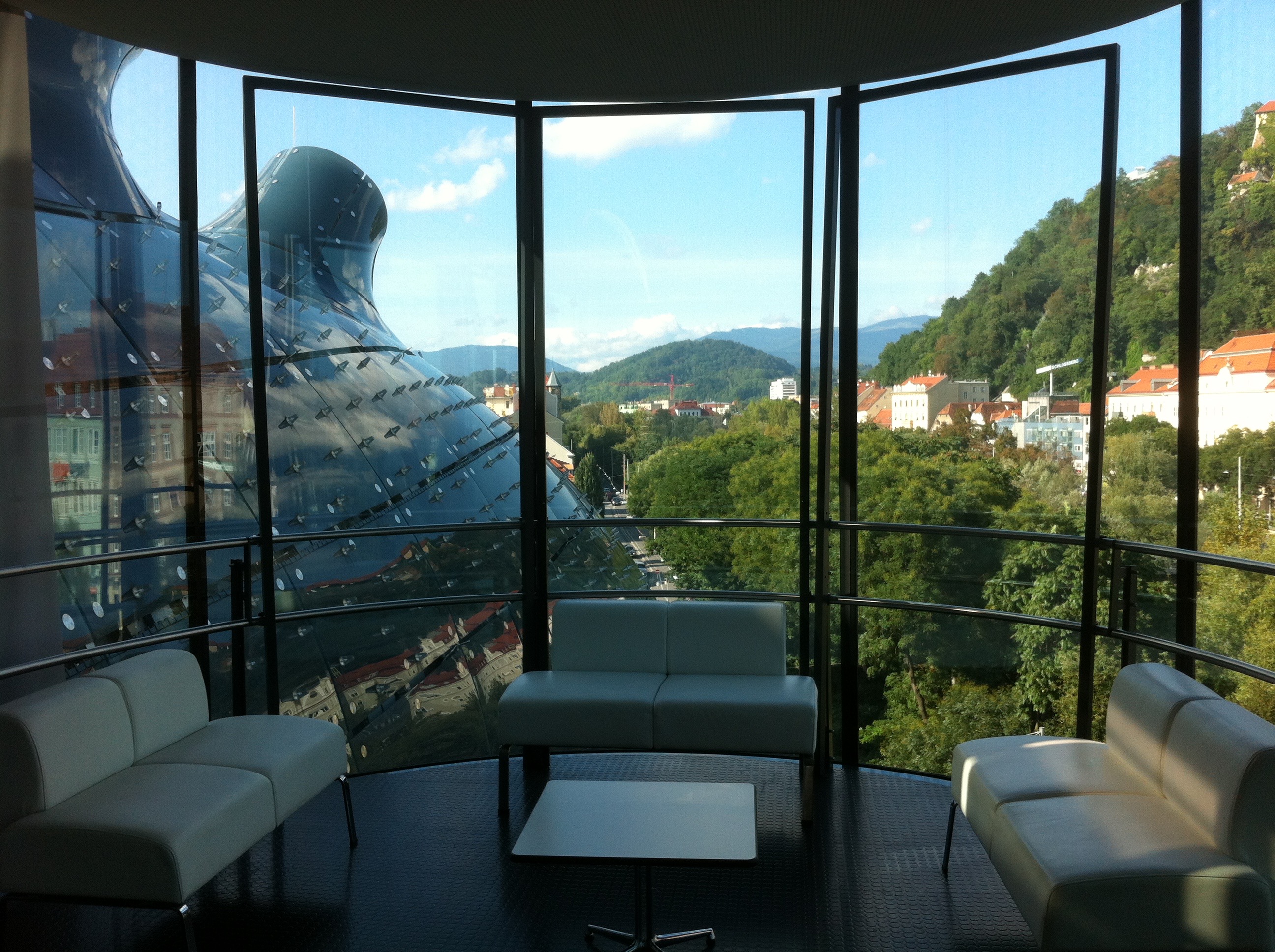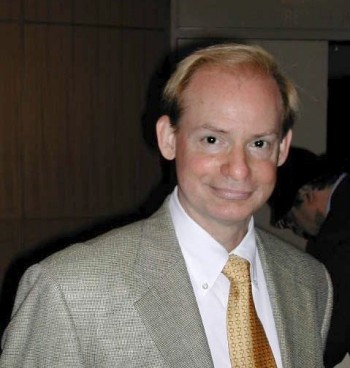Chronopaths: Feelings in Place #3
 Sunday, November 19, 2017 at 04:56PM
Sunday, November 19, 2017 at 04:56PM A View in Graz
Looking out a well-placed window onto the roof of a modern art museum set in the rolling landscape of a small city not far from the Alps.

Feeling the thrill of being high above the landscape. Feeling the imagined danger of having nothing but a pane of glass between you and a long fall. Feeling wonder and amazement at the bizarre but sensuous architecture of the building's roof and openings to the light. Feeling the radical contrast between modern uniform colors and textures, simple shapes and surfaces versus the complexity and richness of the natural shapes of hills, trees, mountains and clouds.
Feeling drawn backward away from the window back into the museum interior, but also feeling the pull to fly out and soar through the magnificent scene in front of you. This push and pull is interrupted by the great curving surface of the roof seeming to push our line of attention off towards the right. That feeling is strengthened by the reflections we see in the roof of the scene around to the right and even below and behind us
The town and the museum are centered in a river valley where the land rises steeply up on both sides. From our vantage point here, we are as high or higher than the immediately surrounding hills and buildings. We float above but we still feel pushed and pulled, drawn forwards and back, pulled out and around. We stand still but our feelings imagine us moving in all these ways, creating a dynamic sense of activity even while the scene before us remains static and tranquil.
Once again, the way we feel is a rich contradiction between rising and falling, steping back and moving forwards, relaxing and adventuring, feeling restful and excited. Two different esthetics blend and clash, the ultramodern and the classical, and the feelings that go with each of these. With the modern, we feel attracted to our sense of amazement at the possibility of building such a structure and its triumph of imagining outside-the-box, but we also feel some regret and alienation because this industrial modern style does not agree with our human need to have things around us that follow the natural patterns of millennia of human evolution in the way that the landscape outside does.
These feelings are heightened by the contrast between trees, hills, mountains, clouds, and sky that we are seeing on the one hand and the ultramodern building we are in and also looking at. Everything that appeals to us about the rolling wooded hills and fair-weather clouds in the sky is so very much not what appeals to us about the modern architecture. And yet that curving glass roof also reflects the clouds, the hills, and the much more traditional buildings below. The museum is trying to blend in and to stand out. We are caught in between for better and for worse. We can love the hills and admire the building. We can feel the excitement of visiting the alien imagination of the museum, even while we might find ourselves more comfortable living in one of those older buildings down below.
The special feeling of this place and this view is rooted in its contrasts and contradictions, in excitement and restfulness, in feeling affinities -- however contrary -- with both these worlds at once.

Reader Comments